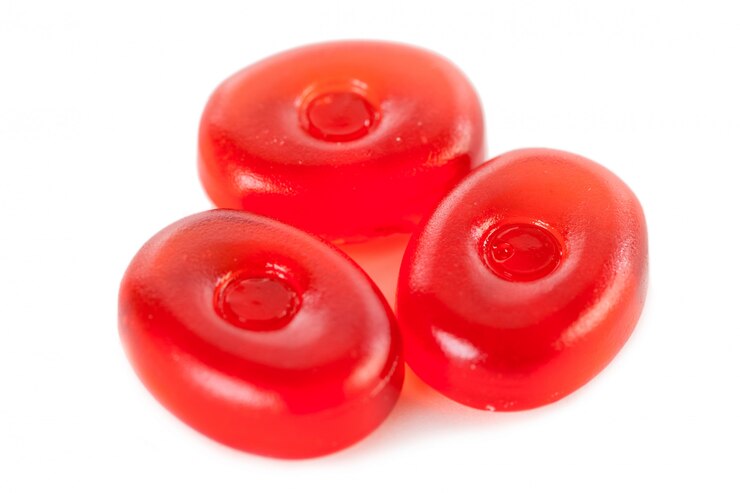Acacia gum, also known as gum Arabic, is a versatile ingredient with various applications in food, beverages, and other industries. Choosing the best alternative depends on the specific desired functionality and the context of use. Here are 20 potential alternatives to acacia gum, categorized by their main function:
Thickening and Emulsifying:
- Guar gum: Similar thickening power, good for gluten-free products but requires less gum.
- Xanthan gum: Excellent emulsifier and thickener, good synergy with guar gum.
- Locust bean gum: Similar properties to guar gum, with a slightly different texture.
- Agar-agar: Plant-based gelling agent, great for vegan applications.
- Carrageenan: Seaweed-derived thickener and gelling agent, good for dairy products.
- Pectin: Natural thickener from fruits, excellent for jams and jellies.
Stabilizing and Suspending:
- Gelatin: Animal-derived gelling agent, good for mousses and aspics.
- Alginates: Seaweed-derived gelling and thickening agents, used in fruit fillings and gels.
- Sodium citrate: Food acid and chelating agent, that prevents sedimentation in beverages.
- Sodium tripolyphosphate (STP): Food additive for preventing water loss and textural changes.
Coating and Film-forming:
- Shellac: Natural resin from lac bugs, used for confectionery coatings.
- Carnauba wax: Plant-based wax, used for candy and fruit coatings.
- Hydroxypropyl methylcellulose (HPMC): Cellulose derivative, used for edible films and capsules.
- Pullulan: Fermented polysaccharide, used for edible films and coatings.
Other Functions:
- Starch: Thickener and bulking agent, widely used in baking and sauces.
- Cellulose: Dietary fiber, used for bulking and texture in low-calorie foods.
- Inulin: Prebiotic fiber, that promotes gut health and can thicken some products.
- Egg white: Natural emulsifier and foaming agent, used in baking and confectionery.
- Soy lecithin: Natural emulsifier and antioxidant, used in various food and cosmetic products.
- Modified starches: Various starches with specific functionalities like waxy maize starch for film-forming.
Remember to consider factors like cost, availability, dietary restrictions, and desired texture when choosing an alternative to acacia gum. Consulting with a food scientist or industry professional can help you select the best option for your specific needs. THERE IS ANOTHER ARTICLE I WROTE >>>> Alternatives to active directory for small businesses THAT YOU SHOULD READ TO LEARN MORE ABOUT ALTERNATIVES.
Beyond Acacia Gum: Exploring the Landscape of Thickening and Stabilizing Alternatives.
In my 25 years as a product reviewer and ingredient investigator, I’ve learned that innovation can thrive even in the face of limitations. That’s certainly true of acacia gum, a versatile natural thickener and stabilizer known for its emulsifying prowess and film-forming abilities.
While acacia shines in many applications, cost fluctuations, supply chain challenges, and potential dietary concerns can prompt us to explore other avenues. Fear not, fellow adventurers in the world of culinary exploration, for a wealth of alternatives await!

I. Plant-Based Powerhouses:
- Guar Gum: This galactomannan superstar shines in gluten-free baking, thickening batters, and stabilizing fillings. Unlike acacia, guar needs minimal heat activation, making it ideal for cold desserts. However, its slightly grainy texture and tendency to gel can require adjustments in recipes.
- Xanthan Gum: This fermentation-derived wonder excels at thickening liquids and preventing separation. Think sauces, dressings, and dips – xanthan’s your buddy. Compared to acacia, it has a milder flavor and requires less usage, but can interact with certain dairy products, so keep that in mind!
- Agar-Agar: This seaweed-derived gem is a vegan gelling agent extraordinaire, perfect for jellies, puddings, and vegan marshmallows. Unlike acacia, agar sets at room temperature, offering unique textural possibilities. However, its neutral flavor can sometimes require additional taste adjustments.
- Pectin: This fruity friend, extracted from citrus peels and apples, excels at thickening jams, preserves, and fruit fillings. Compared to acacia, pectin offers a distinct tartness and requires specific sugar ratios for optimal gelling. But for that homemade jam satisfaction, there’s no substitute!
II. The Starch Spectrum:
- Tapioca Starch: This versatile starch delivers film-forming and texturizing magic, ideal for glazes, icings, and gluten-free baking. Compared to acacia, tapioca has a neutral flavor and doesn’t require heat activation, but its thickening power is slightly weaker.
- Waxy Maize Starch: This modified starch masters the art of emulsification, keeping oil and water happily married in beverages, salad dressings, and confections. Compared to acacia, waxy maize has a smoother texture but can offer a slightly “starchy” flavor at higher concentrations.
III. Beyond the Usual Suspects:
- Karaya Gum: This lesser-known thickener and adhesive shares some functional similarities with acacia, making it a potential option for specific applications. However, its availability and limited culinary research require further exploration.
- Locust Bean Gum: This galactomannan cousin of guar gum offers thickening and gelling properties, often used in ice cream and baked goods. Compared to acacia, locust bean gum has a slightly sweet flavor and may require different usage levels.
IV. A Tailor-Made Approach:
Choosing the perfect alternative isn’t a one-size-fits-all game. Consider these factors:
- Functionality: Does your recipe require thickening, emulsifying, stabilizing, or a combination?
- Sensory Impact: Will the alternative affect taste, texture, or mouthfeel?
- Dietary Restrictions: Does the alternative align with your or your customers’ dietary needs?
V. A Recipe for Success:
- Pilot Tests: Don’t jump headfirst into the unknown! Experiment with small batches before committing to a full-scale substitution.
- Expert Guidance: Consult food technologists or manufacturers for their insights and recommendations.
- Recipe Tweaks: Be prepared to adjust ingredient ratios and processing steps for optimal results.
Remember, exploration is half the fun in the kitchen! While acacia gum may have held a special place in our culinary repertoire, these alternatives offer a spectrum of possibilities. So, embrace the adventure, experiment with these plant-powered gems, and discover the world of thickening and stabilizing beyond acacia gum!
I encourage you to delve deeper into each alternative, researching its specific properties and experimenting with it in your own culinary creations. The possibilities are endless, and the journey is sure to be rewarding!
Matching Gums to Needs: Your Guide to Substitution Success.
With the exciting array of alternatives laid out before us, the next step is finding the perfect match for your specific needs. It’s like a culinary matchmaking game, where we pair the ideal gum with its destined recipe.
Understanding Functional Needs:
First, let’s identify the functional role you need the gum to play. Is it all about thickening that luscious soup or stabilizing that dreamy ice cream? Perhaps you need an emulsifying champion to keep your salad dressing in a harmonious union. Each alternative excels in different areas, so knowing your goal is key.
- Thickening: If thickening is your primary objective, guar gum and xanthan gum are your knightly companions. Guar gum shines in cold applications like puddings and pie fillings, while xanthan conquers sauces and dressings with its heat-activated prowess.
Xanthan gum powder Emulsifying: When oil and water need a matchmaker, waxy maize starch steps in with its emulsifying expertise. It’s the secret weapon in creamy salad dressings and beverages, ensuring a smooth and stable union.

Waxy maize starch powder Stabilizing: For that perfect suspension of fruit pieces in your jam or to prevent separation in your yogurt, pectin and agar-agar come to the rescue. Pectin gels beautifully with sugar, while agar-agar’s thermosetting magic sets at room temperature, offering unique possibilities.
Sensory Considerations:
Beyond functionality, the sensory impact of your chosen gum deserves attention. Will it alter the delicate taste of your dish or leave an unwanted grainy texture?
- Neutral Notes: Starches like tapioca and waxy maize generally offer a neutral flavor profile, making them versatile options for various applications.
- Subtle Sweetness: Locust bean gum brings a hint of sweetness to the party, which can be a welcome addition to baked goods or ice cream.
- Tart Twists: Pectin’s natural tartness adds a delightful dimension to jams and fruit-based creations.
Dietary Alignments:
For some, dietary restrictions play a crucial role in gum selection. Thankfully, the plant-based world offers several options!
- Gluten-Free Champions: Guar gum and xanthan gum are gluten-free superstars, making them ideal thickeners for those with celiac disease or gluten sensitivity.
- Vegan Delights: Agar-agar and tapioca starch are completely plant-based, catering to vegan and vegetarian dietary needs.
Remember: This is just a starting point. Each alternative has its own unique set of properties and nuances. Don’t hesitate to experiment and discover what works best for your specific culinary creations!
By considering these factors, you’ll be well on your way to a successful substitution, proving that venturing beyond acacia gum can be a delicious and rewarding adventure. So, grab your whisk, embrace the possibilities, and let the gum-matching games begin!
Switching Gears: Practical Tips for Acacia Gum Alternatives.
So, you’ve chosen your perfect alternative – congratulations! But before diving headfirst into a full-scale recipe overhaul, let’s equip ourselves with some practical tips for a smooth transition. Remember, venturing beyond the familiar requires a bit of preparation and experimentation.
Pilot Testing Prowess:
Don’t let your culinary masterpiece become a casualty of untested substitutions! Conduct pilot tests first, using small batches to assess the alternative’s behavior. This allows you to fine-tune ingredient ratios, adjust processing techniques, and ensure the desired texture and taste before committing to a larger production.
Expert Guidance:
Sometimes, even the most seasoned chefs need a helping hand. Consult with food technologists or manufacturers who specialize in alternative ingredients. Their expertise can be invaluable in navigating the nuances of specific gums and providing substitution recommendations tailored to your recipe.
Recipe Tweaks:
Be prepared to adjust your recipes! Substitution isn’t always a one-to-one swap. You might need to tweak ingredient ratios, modify processing times, or even experiment with different combinations of alternatives to achieve the optimal result.
The Sensory Safari:
Pay close attention to the sensory impact of your chosen alternative. How does it affect the taste, texture, and mouthfeel of your dish? A slightly grainy texture from guar gum might be undesirable in a smooth soup, while xanthan gum’s mild sweetness could enhance a creamy dessert. Embrace the sensory exploration and adjust accordingly.

Label-Reading Linguistics:
Become a label-reading ninja! Familiarize yourself with the technical terms used for different gums on ingredient lists. This can help you identify potential substitutes in store-bought products or understand how other manufacturers utilize alternative thickeners.
Storage Savvy:
Remember, proper storage is key to maintaining the quality of your chosen alternative. Ensure you store them in airtight containers in a cool, dry place to prevent moisture absorption or spoilage.
Community Connections:
Don’t hesitate to tap into the wealth of knowledge within the online culinary community! Forums, recipe repositories, and social media groups dedicated to gluten-free, vegan, or allergy-friendly cooking often offer valuable insights and substitution tips from fellow adventurers in the world of alternative ingredients.
By embracing these practical tips, you’ll transform the process of switching from acacia gum into a fun and rewarding learning experience. Remember, experimentation is key to culinary success, and the journey of exploration can lead to even more delicious discoveries! So, channel your inner culinary alchemist, mix, match, and experiment with confidence!
Frequently Asked Questions: Demystifying the World of Acacia Gum Alternatives.
The quest for the perfect acacia gum alternative can spark a whirlwind of questions. Fear not, intrepid explorers, for I’m here to shed light on some of the most frequently asked queries surrounding these fascinating ingredients.
1. Are there any health concerns associated with acacia gum alternatives?
The good news is that most commonly used acacia gum alternatives are generally considered safe for consumption. However, as with any ingredient, it’s always recommended to check for potential allergies or sensitivities, especially if you have any pre-existing digestive concerns. Consulting your healthcare professional for personalized advice is always a wise step.
2. Can I use a combination of different gums for better results?
Absolutely! Combining different gums can be a fantastic way to achieve specific textural and functional goals. For instance, you might pair xanthan gum’s thickening prowess with locust bean gum’s gelling abilities for a perfectly stable and smooth ice cream base. Experimenting with different combinations is part of the fun, so don’t be afraid to get creative!
3. What are the cost implications of switching to an alternative gum?
The cost of alternative gums can vary significantly depending on the specific ingredient and its source. Generally, starches like tapioca and waxy maize tend to be more cost-effective than gums like agar-agar or karaya gum. However, remember that price isn’t the only factor to consider. The required dosage of each alternative can also impact your overall cost.
4. Where can I find reliable suppliers of alternative gums?
Finding reliable suppliers depends on your needs and location. Online retailers specializing in food ingredients often offer a wide variety of options, while local health food stores or manufacturers might cater to specific dietary requirements. Consulting with food technologists or industry professionals can also provide valuable insights into reliable supplier networks.
5. Are there any emerging alternative gums I should be aware of?
The world of food science is constantly evolving, and with it, the landscape of alternative thickeners and stabilizers. Keep your eyes peeled for exciting newcomers like microbial cellulose, a sustainable option produced through fermentation, or konjac glucomannan, a fiber-rich gum extracted from the konjac plant. These emerging stars offer unique functionalities and cater to specific dietary needs, making them worth exploring for your future culinary creations.
Remember, venturing beyond acacia gum can be a delicious and rewarding adventure. By delving into these frequently asked questions, equipping yourself with practical tips, and embracing experimentation, you’ll be well on your way to mastering the art of alternative gum utilization. So, get out there, explore, and let your culinary creativity flourish!
Beyond the Basics: Advanced Substitution Strategies for Culinary Adventurers.
Conquered the fundamentals of acacia gum alternatives? Feeling ready to push the boundaries of texture and taste? Welcome, intrepid explorer, to the realm of advanced substitution strategies! Here, we delve deeper into the complexities of ingredient interplay, unveiling secrets to elevating your culinary creations.
Harnessing Synergies:
Go beyond single substitutes and unlock the magic of combining alternatives. A dash of xanthan gum alongside guar gum in your gluten-free bread dough can yield an airier crumb and longer shelf life. Pectin and agar-agar can form a dynamic duo in vegan jellies, offering a firm yet melt-in-your-mouth texture. Remember, experimentation is your key to unlocking synergistic wonders!
Mastering Temperature:
Heat your way to success! Understand how different alternatives react to temperature changes. Guar gum shines in cold applications like custards, while xanthan thrives in heated sauces. Waxy maize starch loves a good simmer to fully emulsify, while agar-agar sets magic at room temperature. Befriend the thermometer and watch your textures transform!
Flavor Fusion:
Don’t just thicken, enhance! Consider the subtle flavor nuances of each alternative. Locust bean gum’s hint of sweetness can elevate baked goods, while pectin’s tartness adds a delightful zing to jams. Tapioca starch boasts a neutral palate, making it a chameleon in savory dishes. Embrace the flavor profiles and dance with your taste buds!
Science in the Kitchen:
Become a kitchen chemist! Research the unique properties of alternative hydrocolloids, like their water-binding capacity and syneresis (liquid release) tendencies. This knowledge empowers you to predict behavior and fine-tune ratios for optimal texture and stability. Embrace the science and watch your culinary prowess soar!
Sensory Storytelling:
Go beyond the spoon! Consider the mouthfeel you want to create. Does your dish crave a silky smoothness, a playful crunch, or a comforting chew? Each alternative offers a unique textural experience. Choose wisely and weave a captivating tale through your ingredients, one bite at a time.
The Art of Balance:
Remember, substitution is a delicate dance. Start with small adjustments, gradually scaling up as you gain confidence. Over-substitution can lead to gummy disasters or flavor imbalances. Tread with caution, keep a keen eye on texture and taste, and adjust your recipe with finesse.
The Neverending Quest:
Never stop exploring! Immerse yourself in the ever-evolving world of food science. Stay updated on new alternative thickeners and experiment with their functionalities. Attend workshops, connect with culinary communities, and let curiosity be your compass. The journey of substitution is a vibrant path of discovery, paved with countless delicious possibilities.
So, cast off the shackles of routine and embrace the adventure beyond acacia gum. With these advanced strategies as your guide, you’ll transform your kitchen into a laboratory of creativity, where each substitution becomes a masterpiece in the making. Remember, the only limit is your imagination! Bon appétit!
I am commitment to crafting compelling narratives and delivering insightful content continues to inspire and inform readers across various platforms. Explore her articles on AlternativesZone.com and FactAfterFact.com to experience a rich tapestry of knowledge and discovery. Here I Analyze and Test the products and services together with my team before we recommend them to our users. Nice Reading Here!








No responses yet